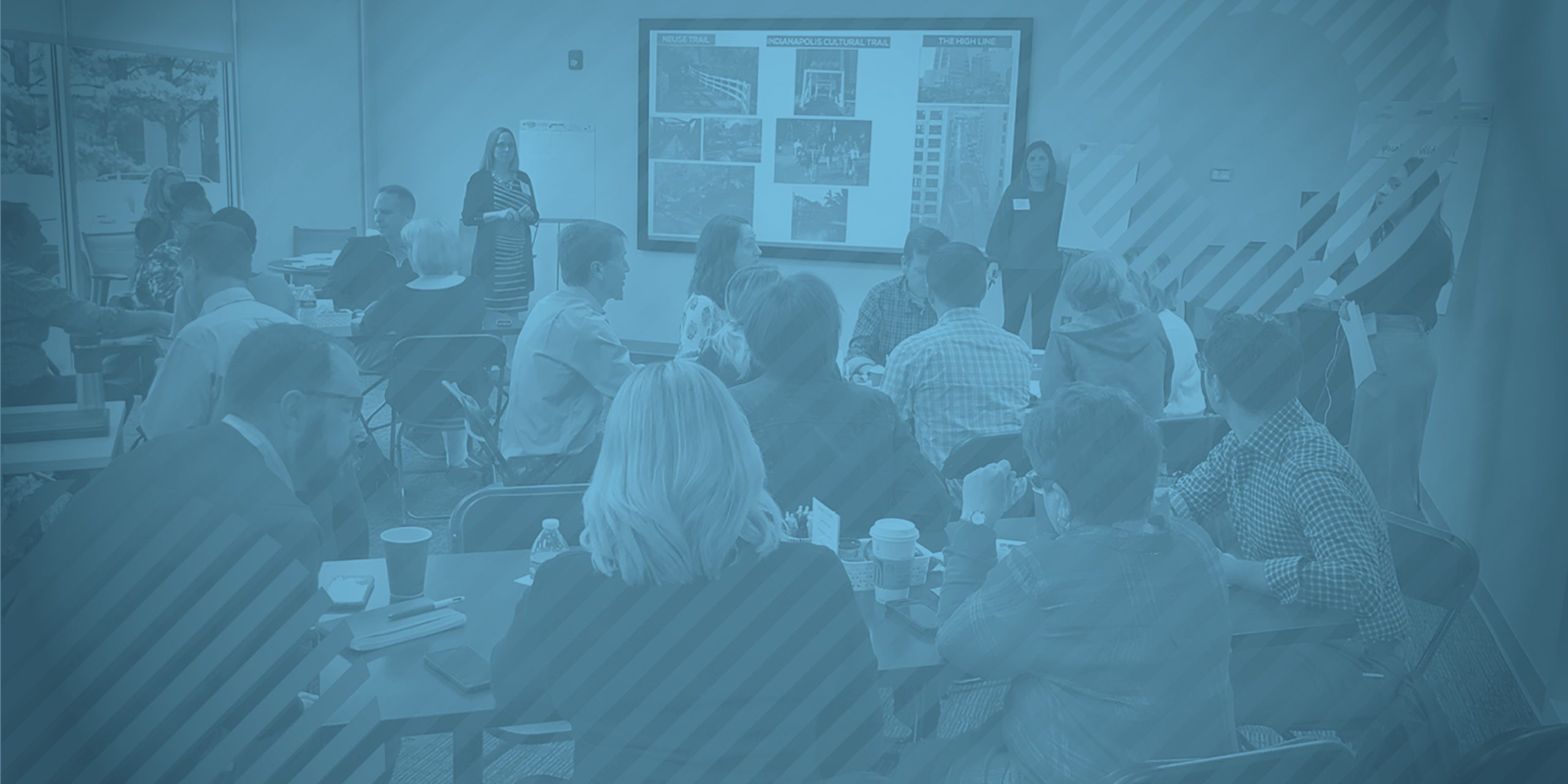In February of this year, we had the opportunity to partner with PlanRVA and Sports Backers to lead a project that would result in the naming of a new trail extending from Ashland to Petersburg, Virginia. In our onboarding process, we learned that the trail would pass through seven jurisdictions within Central Virginia, reinforcing the importance of collaboration among localities.
As we took some time to plan for how we would lead our clients and the community through the process, we landed on the idea of inviting representatives from each group to a brainstorming workshop to learn about their visions for the trail firsthand. That way, their ideas, creativity, and potential concerns could be shared collectively, with guidance and structure from our team. A successful result required thoughtful planning for how to structure the workshop. How would we make sure 20 people with different approaches could be heard – while promoting an environment of respect and learning from one another – and come away with a name everyone could be proud of?
With our goals clearly set, our team spent the weeks leading up to the event planning for a successful morning. We tested activities and brainstormed potential outcomes. We considered the time needed for the various exercises and thought through how to keep our community players engaged. Without careful planning, leading a team through such an exercise is like showing up to a big game without practice. In our “big game,” we needed to accomplish three things:
- Brainstorm and concept potential names
- Maintain a collective sense of community throughout the process
- Encourage participation from everyone in attendance
While we were incredibly passionate about the project, pulling the session together was no small task. Only by placing an emphasis on intentionality in our approach and execution were we able to set the stage for a successful outcome.
Whether you’re leading a session to inform a naming process, generate content ideas or facilitate communication between disconnected groups, the five key elements listed below can provide critical structure for driving productive dialogue among stakeholders with disparate goals. The elements work in conjunction with each other and act as a roadmap for encouraging discourse, helping groups reach their goals, and creating long-lasting relationships and impact.
- Know what you want to achieve. It sounds simple, but start with the end in mind. When all parties involved know what they’re working toward, it provides content, focus and clarity for individual contributors. It’s best to start your session by clarifying the ultimate goal and reinforcing that key objective as the day goes on. Tip: Have materials on the groups’ tables that reinforce the goal – and consider bringing a visual that supports the goal into the space to keep it front and center.
- Understand your audience. Who are you collaborating with, and what is/are their background(s)? It’s important to understand what your attendees’ day-to-day roles are and how you can engage with them. You may want to start by asking them to work in teams, which can help draw out those who are more reserved and get them involved in the conversation. Leaning into team work first, before sharing with the larger group, also allows for collaboration and trust-building to get the creative juices flowing. Tip: Choose groups that are diverse in both background and personality. This will hopefully lead to creative thinking and a mix of viewpoints
- Create the environment and define the rules of the road. It’s important to set the tone for the session so that participants will be engaged and inclined to add value. This begins with the facilitator, the space and the materials provided. Tip: Share with your participants what they can expect ahead of time, stick to your schedule (everyone’s time is precious), and acknowledge and encourage the group’s work along the way.
- Be adaptable: Not every activity will go exactly as you had envisioned, and that’s okay. It’s important to find a facilitator who is able to read the room, encourage teamwork, and pivot as needed. Sometimes it’s best to hold back and let the group work through its own obstacles, which may be a hidden opportunity to let them use their own momentum to reach the end goal. Tip: The right facilitator makes a difference. You may have the perfect fit in your organization, or you may need to partner with a research firm based on the size and structure of your workshop.
- Have fun! These kinds of workshops are meant to bring together individuals to work collectively toward a common goal. Tip: Bring in props and quiet fidget activities to keep participants’ minds clear. We gave our group Play-Doh, markers for coloring, and stress balls to keep their hands busy while their minds were doing the heavy lifting.
Workshops and brainstorming sessions are a great way to encourage collaboration and discussion, develop new ideas, and expand participants’ thinking. With the right planning and an adaptable structure for the day, you can achieve valuable results for everyone involved.
;)